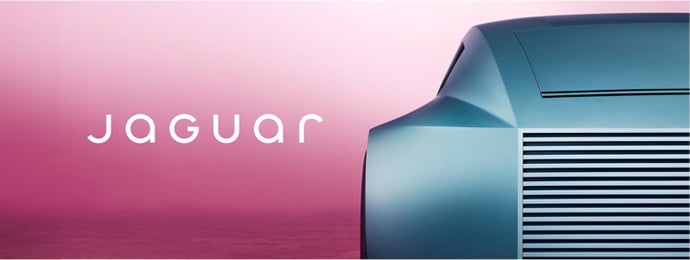
Jaguar's recent rebranding marks a significant shift in the automotive industry, reflecting the brand's commitment to an all-electric future. This transformation is not merely cosmetic but signifies a strategic pivot towards sustainability and modernity.
In November 2024, Jaguar unveiled a refreshed logo featuring a stylised "JaGUar" with a mix of upper and lower case letters, accompanied by a reimagined "leaper" cat emblem set against 16 lines. This design aims to blend tradition with modern aesthetics, aligning with Jaguar's vision for the future. However, the new branding has sparked mixed reactions, with some enthusiasts expressing concern over the departure from the classic design.
While it might be frustrating for fans to wait and see how Jaguar’s rebrand translates into actual cars, the good news is that the wait won’t be too long. The much-anticipated ‘Design Vision Concept’ is set to give us a first look at Jaguar’s future. Rumour has it this will be a luxurious, all-electric four-door GT, possibly rivalling the likes of the Porsche Taycan or Audi e-tron GT. Of course, that’s just speculation for now, but the buzz around this reveal shows how much is riding on Jaguar’s next move. For now, we can only imagine what’s to come and hope it’s worth the wait.
Before its bold rebrand, Jaguar was cherished as a symbol of British automotive excellence. Founded in 1922 as the Swallow Sidecar Company, Jaguar evolved from crafting sidecars to producing some of the most luxurious and innovative cars the world had ever seen. The brand gained global acclaim with models like the E-Type, famously dubbed "the most beautiful car ever made" by Enzo Ferrari and motorsport triumphs with the C-Type and D-Type at Le Mans.
Today, its history forms the foundation of its brave step into the future with an all-electric vision and a modernised identity. While the new rebrand aligns with a futuristic, electric vision, it has definitely distanced itself from Jaguar's legacy of British excellence, leaving many car enthusiasts deeply disappointed.

Jaguar's Design Vision Concept
Central to Jaguar's rebranding is its commitment to becoming an electric-only manufacturer by 2025, ahead of the UK's 2030 ban on new petrol and diesel cars. The company plans to launch three new electric vehicles, starting with a four-door GT model in 2026, followed by an SUV and a luxury saloon. This strategic move positions Jaguar alongside luxury competitors in the electric vehicle market.
As part of this transition, Jaguar has ceased production of several models, including the XE, XF, and F-Type. The F-Pace will continue production into 2025 before being discontinued. This pause in new car sales allows Jaguar to focus on developing its upcoming electric lineup, aiming to redefine the brand's identity and appeal.
The rebranding has elicited diverse opinions. While some critics argue that the new logo and branding stray too far from Jaguar's heritage, others appreciate the bold step towards innovation and sustainability. The true test will be how consumers respond to the new electric models upon their release. Jaguar's ability to balance its rich history with a forward-thinking approach will be crucial in this new chapter.
Jaguar's rebranding represents a pivotal moment in its history, embracing an electric future while attempting to honour its legacy. As the automotive industry evolves, Jaguar's strategic decisions will play a significant role in shaping its position in the luxury electric vehicle market.
Looking for more motoring content? Why not check out our latest blog, Jaguar Will Pause New Car Sales for an Entire Year? We also publish weekly blogs covering a variety of topics, all of which you can explore in the blog section of our website. For more information, browse our in-depth car leasing guides or check out our range of leasing deals and speak to one of our specialists at 0345 811 9595.

